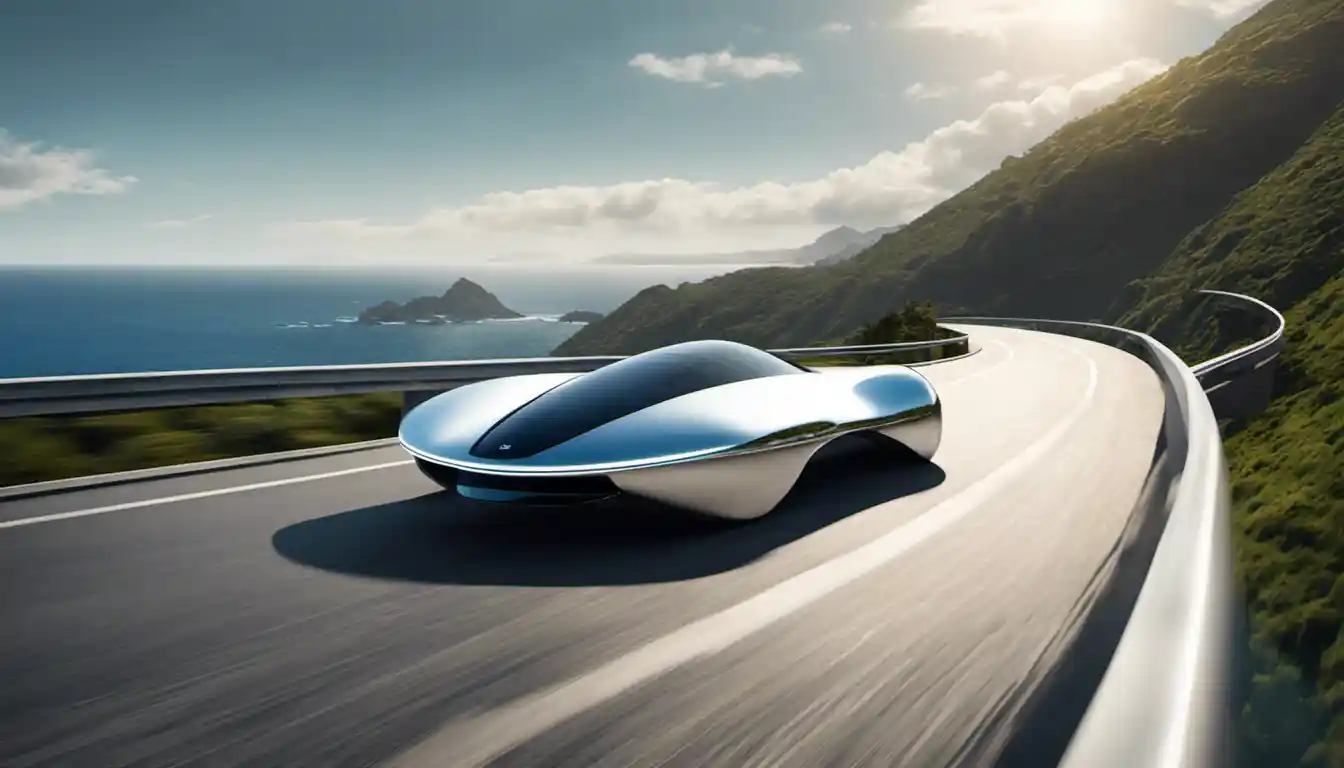Understanding Solar Cars
Solar cars function by converting sunlight into electricity through photovoltaic cells that are installed on the surface of the vehicle. These cells then charge the car’s batteries or power the motor directly. This technology allows the car to run without depending on traditional fuel sources, instead harnessing the renewable energy of the sun.
Definition and Overview
The concept behind how solar cars work and how solar powered vehicles work is based on harnessing the power of the sun, a resource that is not only abundant but also helps reduce carbon emissions. A solar car is essentially an electric vehicle that uses solar energy converted into electricity to charge a battery or to feed an electric motor. It’s a simple yet powerful way of utilizing nature’s resources.
How Does a Solar Car Work?
Solar cars function by capturing the sunlight energy directly onto their solar panels. These panels are made of photovoltaic cells – a technology that converts sunlight directly into electricity. The electricity generated runs the motor which propels the vehicle forward. The trick is in harnessing and storing this energy in a manner that can be sustained, making efficient use of what the Sun provides freely every day.
Key Components of a Solar Car
To fully understand how solar cars work, we need to dive into the key components that make solar-powered vehicles tick. These are essential in leveraging the endless supply of the sun’s energy.
Solar Panels and Photovoltaics
When we talk about a vehicle that derives its power from solar energy, photovoltaic cells, (PV cells), are an indispensable part of the equation. They capture sunlight and transform it into usable electrical energy. The efficiency of these cells determines how well the car will perform, so they are a critical focus in the development of solar cars.
Battery and Electricity Storage
Once the electricity is generated, it needs to be stored effectively. This is where high-capacity batteries come into play, storing energy for use when the sunlight might not be sufficient, like on cloudy days or at night. The better the battery, the longer the range of the solar car.
Electric Motor

The electric motor propels the solar vehicle motion. It’s powered by the electricity generated by the photovoltaic cells.
Eventual Use of Heat Energy
While the main functioning of solar cars relies on photovoltaic cells, new technological developments are exploring how to use solar thermal energy. Solar concentration devices focus sunlight into a small area, producing heat which can be harnessed to drive the car forward.
Current Developments in Solar-Powered Cars
In the present day, a few major companies like Lightyear, Aptera, and Sono Motors have made significant strides in the development of these vehicles.
Breakthrough Technologies
Innovation is rampant in this space. One major breakthrough is solar paint, which can generate electricity from sunlight when applied to any surface. This paves the way for entire vehicle bodies to become energy generators.
Major Companies and Prototypes
Many companies are currently working on creating solar-powered vehicles. For example, Sono Motors is developing the Sion, which can gain up to 34km a day purely from the sun. And that’s just the start.
Benefits of Solar-Powered Cars
To better appreciate how far we’ve come, let’s look at the many benefits of solar cars.
Sustainability and Decreased Fossil Fuel Dependence

Solar cars can significantly reduce our dependence on fossil fuel and work toward reducing carbon emissions. They’re an investment in a cleaner future, making a strong case on why we should understand how solar cars work.
Economic Advantages
Although the upfront costs are high, solar cars provide long-term economic benefits. Notably, they save money on fuel and have fewer mechanical components which could break down.
The Future of Solar Cars
The future of solar cars is bright (pun intended!), but certain challenges persist.
Existing Challenges and Obstacles
While technological advances continue to propel the solar vehicle industry forward, there are still hurdles. One of the biggest challenges is the limited efficiency of photovoltaic cells. However, continuous research and innovation promise a competitive future for solar cars against their conventional counterparts.
When Can We Expect Commercial Solar Cars?
Commercial solar cars are not too far off in the future. With companies like the previously mentioned Sono Motors and Lightyear working aggressively to bring solar cars to market, we may see widespread use of solar cars much sooner than anticipated.
Solar Cars in Competitive Racing: Driver Of Innovation
Overview of The World Solar Challenge

Notably, solar-powered vehicles didn’t debut in commercial markets but on the race track. The World Solar Challenge, a competitive race showcasing solar-powered cars, has been held in Australia every two years since 1987. This race offers a glimpse at the future of personal transportation.
Impact on Solar Car Development
The World Solar Challenge has tremendously influenced the development of solar cars. It’s largely responsible for inspiring teams to build more efficient, speedy, and reliable solar-powered vehicles, generating advances in the technology at breathtaking speed.
Real-World Examples of Solar Cars
Let’s delve deeper by examining some real-life solar vehicle examples that highlight how solar powered vehicles work.
Solar Car Conversions
An inspiring story on our journey towards solar-powered vehicles is that of Marcelo da Luz, who converted a conventional car into a solar car, setting the world record for the longest trip in a solar car.
Solar Electric Cars: the Tesla Model
Tesla Motors has integrated solar technology into its electric cars. Although not purely solar-powered, the fusion of technologies is a significant step towards understanding how solar cars work and their introduction into the market.
The Fold-up Electric Car
Researchers at Hiroshima University have developed a ‘fold-up’ electric vehicle that runs on solar and mains electricity, demonstrating again the potential of solar vehicles.
Solar Dirt Bikes and Other Innovations
From solar bikes to solar ATVs, the scope of solar mobility does not limit itself to cars. These innovations show us that the sun’s potential in driving our transport system is endless, literally extending to wherever the sun shines.
In conclusion, understanding “how do solar cars work” is not just a technological fascination but a critical step towards adopting renewable energy on a larger scale. The more we understand about solar powered vehicles, the more we can implement them in our daily lives, and contribute to an economically and environmentally sustainable world. So, when the next ray of sunlight hits you, remember – it’s not just sunlight, it’s potential fuel.



